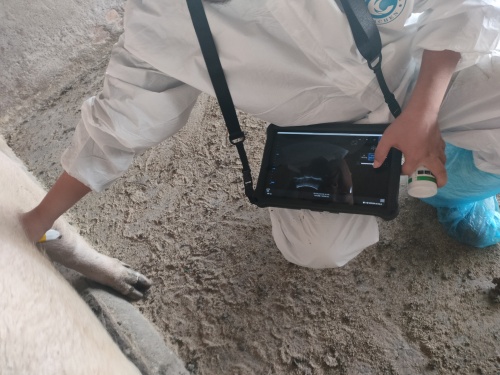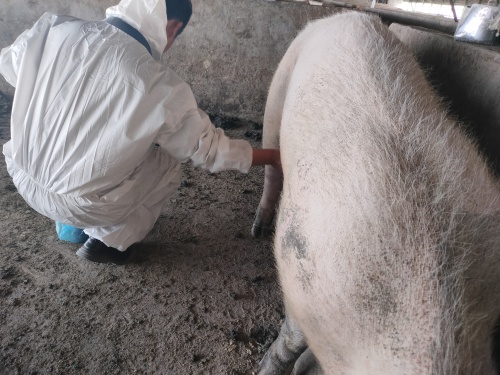Hey there! Ever tried juggling a big, clunky ultrasound machine while chasing a squealing piglet around your barn? If you’ve done that, you know how much of a headache it can be. That’s exactly why I started looking into portable ultrasound tools designed just for pigs. Lightweight, rugged, easy to carry—these gadgets have really shaken up how we handle everything from pregnancy checks to routine health scans on the farm.

Let me tell you what makes them so handy, how different folks around the world use them, what to look out for when picking one, and a few tips that I’ve picked up along the way.
Why go portable in pig ultrasonography?
Stability under pressure. With big stationary systems, you’ve got to wheel the thing into the barn, find a stable surface, worry about trip hazards, power access, cables—I could go on. A portable unit lets you slip it into a backpack or shoulder bag, stroll right up to the patient, and fire off a quick scan. That kind of mobility makes life easier when you’ve got dozens of sows or piglets to check.
Speed matters too. If a sow looks off—maybe dripping milk when she’s not far along, or just not eating—you can fire up the device and check uterine or mammary issues right there. Next thing you know, you’ve ruled out mastitis, a bladder problem, or early pregnancy. No need to load her up, haul her to the clinic, and wait around.
How farmers around the world use them
Let’s imagine a chat over coffee on a video call. On a small-scale farm in Iowa, a hog farmer might say something like: “I use a handheld ultrasound probe for early pregnancy checks around day 21. Saves me a ton on feed costs for the blanks I might have sent to finishing.” Meanwhile in Germany, a swine veterinarian might say: “When respiratory symptoms show, I do a quick lung scan in-field to rule out pneumonia—portable ultrasound is fast and non-invasive.” And over in Vietnam, a smallholder raising a family’s pig herd might lean into it as her “go-to” for everything from checking for pleural effusion to evaluating back fat.
They all agree—ultrasound isn’t just a diagnostic tool, it’s a management lifesaver when it’s portable.

What really matters when choosing one
Here’s what I keep in mind:
-
Probe frequency. Higher frequency (around 5–10 MHz) gives sharper images for superficial structures like mammary glands or subcutaneous fat. Lower freq (2–5 MHz) lets you penetrate deeper for abdominal checks like uterine horns.
-
Image clarity. No point if you can’t actually see what you need. Even in bright daylight, keep an adjustable screen or flip-out display in your toolkit.
-
Weight and battery life. If it’s clunky and dies after five minutes, I won’t bother. Look for under 1 кг, 3–4 hour battery runs, or quick-swap batteries.
-
Ruggedness. Farms are messy. I check for IP ratings (water/dust resistance) and rubberized edges.
-
Software and data. Basic measurement tools, saving or exporting images or video—huge help for records, or sharing with a vet later.
-
Price. Not cheap usually, but the ROI in diagnosed problems, feed savings, fewer vet calls, it’s real.
A quick comparison table of a few portable models
| Model | Probe Frequency | Image Quality | Вес | Батарея | Rugged Features |
|---|---|---|---|---|---|
| BXL-V80 | 4–9 MHz | Good (800×600 LCD) | 0.9 кг | 7 h removable | IPX7, rubber bumper |
| FieldVet Touch | 2–5 MHz | Excellent (touchscreen HD) | 1.1 кг | 2.5 h internal | IP67, drop-resistant |
| MiniEcho PigPro | 3–8 MHz | Very good | 0.8 кг | 4 h swappable | IP54, no special bumpers |
You don’t need to bookmark those model names—they’re examples—but hopefully gives you a structure when comparing real options.
Real-life scanning tips that make a difference
-
Shave or trim hair. Works better than hair alone, and easier if you dry the skin after cleaning.
-
Use coupling gel generously. These pigs aren’t fans of cold gel. A little goes a long way, but make sure it’s fresh so the image stays clear.
-
Calm down your patient. Even quiet pigs squeal or dance. A comfy corner, a helper holding, and gentle voice work wonders.
-
Wipe clean fast. Gel dries, debris sticks, lenses get scratched. Quick wipe, disinfect, done.
-
Use cine or video clips. It’s great when reviewing later—maybe the uterine horn looked weird for a second but fine a moment later.
Chatting with foreign users
In an online forum I came across, someone from Spain said: “My family’s piggery uses a small touchscreen scanner we can carry between pens. We catch issues early—like small abscesses—since we scan regularly.” Another from Australia tagged me in a post: “Portable ultrasound means we don’t miss early mastitis. Just scan next time a sow crosses the gate.” It’s striking how unanimous the practical value is.
It’s not fancy—they don’t post lab photos—but for many, even “good enough” helps keep things smooth, productive, and humane.

Wrapping thoughts
Portable ultrasound gear for pigs isn’t about slick gadgets— it’s about saving time, improving animal welfare, and keeping things efficient. Whether you’re managing reproduction, health checks, or growth monitoring, having a lightweight, tough, easy unit with clear imaging can be a real game changer.
Find the right balance of frequency, долговечность, вес, battery, and user-friendliness for your setup. Pair that with steady technique—shaving, gel, calm handling—and you’ve got a tool that feels like an invisible helper in every pen.
Send me a note if you ever want to compare actual models or talk about budgeting for a scanner—you’ll be surprised how much quicker your pig-management groove gets once you go portable.